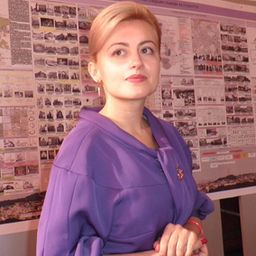11.30 The Memorial Architectural Environment of the City
Mon statut pour la session
The actual task for humanity in terms of globalization and mega-urbanization is to preserve memory. This multi-dimensional memory of humanity is reflected in the architectural environment of a city. Continuous processes of memory representation from individuals, the state doctrine memory, and ending the global processes, occur at various levels in the city environment by means of architecture, design, and art.
Places of memory, buildings, and objects-symbols create the spiritual framework of a city. The perception of a city as a qualitative and valuable environment by the in-groups and the out-groups occurs in the context of self-identification with the urban space, natural and architectural environment, cultural heritage, and is inextricably linked to multidimensional memories: historical, social, urban, individual, national, and so on. A historic or new urban environment is the ground for the materialization of identity and memory, along with the need to preserve the environmental sustainability, safety, and diversity.
This paper is based on materials of sociological studies that were conducted between 2013 and 2015. The study revealed two major types of cities in terms of urban memory in Ukraine. The first group consists of cities with preserved multicultural historical heritage and preserved memory, in which continuous processes took place, as well as the establishment of social memories communities, and transformation under the influence of variables of state doctrine memory. The other group consists of the cities that have lost memory materialized in the built environment during the Second World War and were formed with typical Soviet buildings.
The Ukrainian cities can be further reduced to two main groups. The first group includes the cities where during their historical development community compete for memory approval in the architecture and historical space (e.g. Lviv, Ivano-Frankivsk, Chernivtsi, Uzhgorod and other) and influence of the state variables memory doctrines to which they belong have been decisive. This process is most materialized during the twentieth century. The cities belonging to this group are characterized by the different levels of stored value and historical environment. That historical cultural heritage affect the identification of residents, preservation of historical memory, comfort and memory materialization by the architects in its space. The second group includes Ukrainian cities whose architectural environment was formed with a typical construction at the site destructed during the Second World War.
In Ukraine there is still no formed politics of memory, especially where public spaces should find priority-memory objects that would strengthen and form the city memory.
This paper is also dedicated to the identification of peculiarities of formation of architecture of Lviv of the twentieth and twenty-first centuries—UNESCO World Heritage—interconnected with categories of identity and memory, and the detection of its effect in present-day (the phase of democratic development) architectural and town-planning activities.
We identified the dominant role of state identity in architectural-spatial development of Lviv in the period under study; we conducted research of the twentieth and twenty-first centuries Lviv architecture as an integral phenomenon; we revealed the phenomenon of identity and of memory in multicultural architectural heritage of Lviv in the twentieth century. We determined the basic components of formation of architectural identity of Lviv in the twentieth century. It revealed that various components are dominant in the formation of architectural identities of each historical period (Austrian Empire, the Polish state, the totalitarian Soviet and Ukrainian independence), and we emphasized the main lines. We clarified the dominant local typological identifiers in the formation of the city’s architectural identity of twentieth-century Lviv; and we singled out the new types of buildings. We also studied the process of arrangement of objects-symbols of their identities in the city space, and identified their effect on the formation of the architectural-spatial composition of the city. We conducted comparative analyses of their architectural identities.
We also studied the definition of integrated identity and carried out, with the use of this method, the search of the facilities of integrated identity in the architecture of Lviv. This approach enabled us to conduct interdisciplinary research of architectural heritage and made it possible to figure out their place in the history of architecture and the activities relating to the protection of monuments.
We further examined the sample of identity in the architectural activities; it includes: the identity of an architect, the identity of a consumer of the architectural creation, the identity of an architectural object, and the identity of a place. We researched the identity in the creativity of contemporary architects of Lviv; it revealed that the architects use the appeal to the heritage of the local architectural identity as a source of their inspiration. Some groups of the architects appeal to the universal identity, others, to the national one, still others have a fixed individual architectural identity.
We determined the mechanism of finding the architectural identity of the creation in a variable time-spatial context. Our results reveal the dominant importance of the identity factor in the architectural and spatial development of the city and modern architectural activities.
